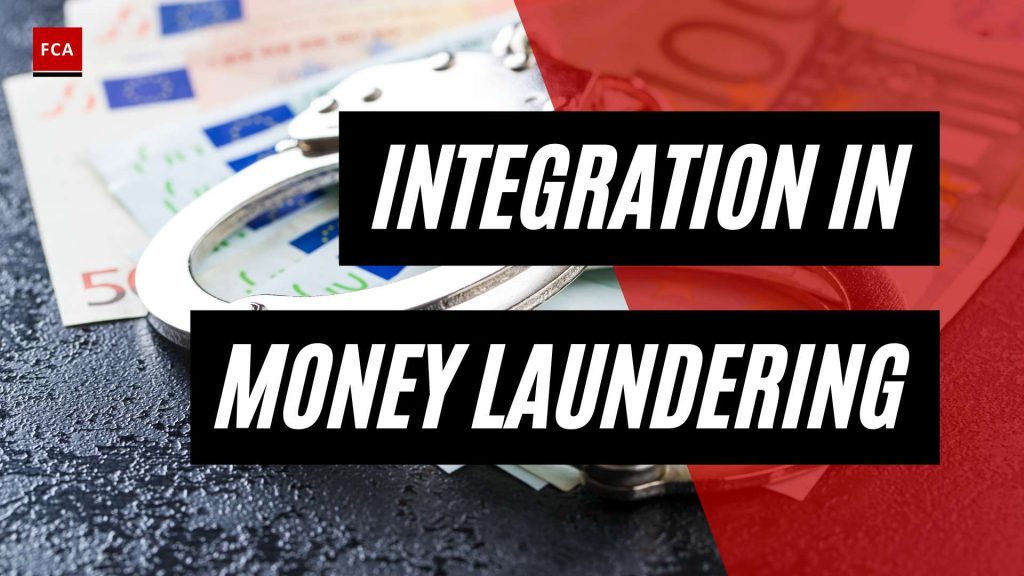Understanding Money Laundering Integration
Money laundering integration is the final stage in the money laundering process, where illicitly obtained funds are reintroduced into the economy to appear legitimate and merged with lawful funds. This phase allows criminals to enjoy their ill-gotten gains without raising suspicion (Investopedia). Integration plays a crucial role in money laundering schemes, enabling criminals to use the laundered money for personal gain while avoiding detection and legal consequences.
Definition and Overview
In the context of money laundering, integration refers to the process of making illegally obtained funds appear legitimate by integrating them into the financial system through various transactions and mechanisms. The integration phase follows the placement and layering stages of money laundering. It involves providing a plausible explanation for the origin of the funds, making it challenging to trace back to the illicit activities that generated them.
During the integration stage, criminals strive to distance themselves from the proceeds of their illegal activities and create a facade of legitimacy. They accomplish this by employing sophisticated financial transactions and utilizing channels that blend illicit funds with lawful assets. By doing so, the laundered money becomes indistinguishable from legitimate funds, making it difficult for law enforcement agencies to identify its illicit origins.
Importance of Integration in Money Laundering
Integration is a critical step in the money laundering process. For criminals, successful integration ensures that they can enjoy the illicit gains without raising any suspicions. By seamlessly merging the laundered funds with legitimate financial activities, criminals can use the money for personal purposes, such as luxury purchases or investments, while avoiding scrutiny from authorities.
The importance of integration lies in its ability to provide criminals with a means to legitimize their ill-gotten gains. By successfully integrating laundered funds, criminals can evade detection, as the money becomes virtually indistinguishable from legitimately acquired assets. This integration process acts as a shield, allowing criminals to enjoy the proceeds of their illegal activities without facing legal consequences.
It is crucial for anti-money laundering professionals, compliance officers, and financial institutions to understand the intricacies of money laundering integration. By recognizing the techniques employed and the challenges involved in detecting integration, stakeholders can develop effective measures to combat money laundering activities and protect the integrity of the financial system.
In the following sections, we will explore the techniques used in integration, the challenges in detecting integration, the international dimension of money laundering integration, examples of integration in money laundering, the consequences of successful integration, and strategies for combating money laundering integration.
Techniques Used in Integration
Integration is a crucial stage in the process of money laundering, where illicitly obtained funds are made to appear legitimate and are reintroduced into the financial system. This section explores some common techniques used in integration, including purchasing high-value assets, establishing fake businesses, and using shell companies.
Purchasing High-Value Assets
One technique used in money laundering integration is the purchase of high-value assets. Fraudsters often acquire assets such as real estate, jewelry, vehicles, or artwork, which can later be sold for cash in countries with lighter anti-money laundering regulations (Unit21). By investing illicit funds in these assets, criminals can obscure the origin of the funds and create the appearance of legitimate wealth.
The process involves using illicit money to acquire the assets, often through complex financial transactions designed to mask the true source of the funds. Subsequently, the assets can be sold, allowing criminals to convert the tainted funds into seemingly clean money. This technique poses challenges for law enforcement and regulatory authorities in tracing the origin of the funds and detecting money laundering activities.
Establishing Fake Businesses
Another method employed in integration is the establishment of fake businesses. Criminals create fictitious companies or fronts to legitimize their illicit funds. These businesses can be used for various purposes, including committing payroll fraud, offering private loans to themselves, or investing in genuine companies with the illegal money.
By operating through these fake businesses, money launderers aim to present the appearance of legitimate economic activity. It allows them to disguise the true nature of the funds and integrate them into the financial system. Detecting such fake businesses can be challenging, as fraudsters often employ sophisticated tactics to create a facade of legitimacy, making it harder for authorities to identify the underlying illegal activities.
Using Shell Companies
Shell companies play a significant role in money laundering integration. These entities are typically paper companies with no actual physical presence or operations. Fraudsters exploit shell companies to obscure the origin of funds by creating a complex network of financial transactions.
By utilizing shell companies, criminals can make the illicit funds appear to come from a legitimate source. The funds are routed through intricate transactions involving multiple entities, making it challenging to trace the money back to its illicit origins. Shell companies provide a layer of complexity that facilitates the integration of illegal funds into the financial system.
| Techniques Used in Integration |
|---|
| Purchasing High-Value Assets |
| Establishing Fake Businesses |
| Using Shell Companies |
Figures courtesy Financial Crime Academy
Understanding the techniques employed in money laundering integration is crucial for combating this illicit activity. Authorities and financial institutions must enhance their vigilance and adopt robust anti-money laundering measures to identify and prevent the integration of illegal funds. By staying informed about the evolving methods used in money laundering, stakeholders can work together to disrupt the flow of illicit funds and protect the integrity of the financial system.
Challenges in Detecting Integration
While combating money laundering is a top priority for authorities and financial institutions, detecting integration in money laundering schemes poses significant challenges. Criminals employ various tactics to hide the illicit origin of funds and make them appear legitimate. Here are some of the key challenges in detecting integration:
Limited-Value Transactions
Integration in money laundering often involves limited-value transactions that appear ordinary, making them difficult to distinguish from legitimate financial activities (Unit21). Fraudsters intentionally keep the transaction amounts low to avoid raising suspicion. These seemingly innocuous transactions can easily blend into the vast volume of everyday financial transactions, making it challenging to identify the illicit funds being integrated.
Sophisticated Methods and Layering
Criminals employ sophisticated methods to integrate illicit funds, further complicating detection efforts. One common technique is layering, where funds are moved through complex transactions to disguise their illicit origins and avoid scrutiny. Layering involves multiple transactions, often across different jurisdictions and financial institutions, creating a complex web that makes it difficult to trace the origin of the funds. Each layer adds another level of complexity, making it harder to detect and unravel the illicit money trail.
Digital Transformation and Technological Advancements
The digital transformation and technological advancements have presented new challenges in detecting integration in money laundering. Criminals leverage online banking, virtual currencies, and other digital tools to integrate illicit funds into the financial system. These technologies provide anonymity and facilitate the rapid movement of funds across borders, making it easier for money launderers to carry out their activities undetected. The use of digital channels also increases the volume of transactions, making it more challenging to identify suspicious activities amidst the vast sea of legitimate transactions.
To tackle these challenges, organizations need robust transaction monitoring solutions that can detect suspicious patterns and anomalies in financial transactions. These solutions leverage advanced analytics and machine learning algorithms to identify potential money laundering activities. By continuously monitoring transactions and applying risk-based approaches, financial institutions can enhance their ability to detect integration in money laundering schemes.
In addition to transaction monitoring, strengthening anti-money laundering measures is crucial. This includes implementing robust know-your-customer (KYC) procedures, conducting thorough due diligence on customers and business partners, and implementing comprehensive compliance programs. International collaboration and legislation are also vital to combat cross-border money laundering activities effectively.
By recognizing and addressing the challenges associated with detecting integration in money laundering, organizations and authorities can improve their ability to prevent criminals from successfully integrating illicit funds into the financial system.
International Dimension of Money Laundering Integration
Money laundering is not confined to a single jurisdiction. It has an international dimension, making it a global challenge that requires coordinated efforts to combat effectively. In this section, we will explore the cross-border challenges faced in money laundering integration and the importance of international cooperation and watchdogs in combating this illicit activity.
Cross-Border Challenges
Money laundering integration poses significant challenges due to its transnational nature. Criminals exploit the differences in regulations, jurisdictions, and financial systems across countries to disguise the illicit origins of funds. They often move money across borders to complicate the tracing and detection process.
The movement of funds across multiple jurisdictions can involve complex networks of financial institutions, intermediaries, and individuals. These networks employ various money laundering techniques, such as layering, structuring, and smurfing, to obscure the origins and ownership of illicit funds. The use of offshore accounts, shell companies, and complex financial transactions further complicates the identification and tracking of laundered money.
International Cooperation and Watchdogs
To effectively combat the challenges posed by cross-border money laundering integration, international cooperation is crucial. Many countries have recognized the need to work together and have developed model legislation, multilateral agreements, and intelligence sharing mechanisms to enhance global anti-money laundering efforts.
International watchdogs play a vital role in coordinating and monitoring these efforts. One prominent example is the Financial Action Task Force (FATF), an intergovernmental organization that sets global standards for combating money laundering and terrorist financing. FATF conducts evaluations of countries’ anti-money laundering measures, recommends improvements, and promotes international cooperation in this field. Its recommendations and guidelines have influenced the development of anti-money laundering laws and regulations worldwide.
Additionally, regional organizations and initiatives, such as the Egmont Group of Financial Intelligence Units and the Association of Southeast Asian Nations (ASEAN) Working Group on Anti-Money Laundering, facilitate cooperation and information exchange among member countries.
By fostering collaboration and information sharing among jurisdictions, international cooperation helps bridge gaps in regulatory frameworks and enforcement capabilities. It enables the identification of cross-border money laundering networks, facilitates the tracing of illicit funds, and supports the prosecution of money laundering offenders.
The fight against money laundering integration requires continuous vigilance and proactive measures from countries worldwide. Strengthening international cooperation, sharing best practices, and enhancing regulatory frameworks are essential to effectively combatting this global menace.
To further explore specific examples of money laundering integration and the consequences of successful integration, continue reading our article on money laundering schemes.
Examples of Integration in Money Laundering
Money laundering involves several stages, including integration, where illicit funds are merged into the legitimate financial system. Here are some common examples of integration techniques used in money laundering:
Real Estate Investments
Real estate is a popular method of integrating illicit funds. Criminals purchase properties using dirty money and then sell them to obtain clean money, creating the appearance of legitimate profit from real estate transactions. This enables the laundered funds to enter the legitimate financial system, making it more challenging to trace their illicit origins (Financial Crime Academy).
Laundering Through Legitimate Businesses
Money laundering through legitimate businesses involves disguising illicit funds as profits from the business. Criminals may inflate revenues or sales to create the appearance of legitimate income, allowing them to integrate the dirty money into the financial system. This method provides a cover for the illicit funds, making it harder to detect their true origins.
Use of Shell Companies
Shell companies, which exist only on paper and do not have any physical operations, are commonly used to integrate illicit funds into the legal economy. By conducting complex financial transactions, laundered money can flow in and out of these entities, making it more difficult to trace its original source. The use of shell companies adds layers of complexity to the integration process, making it challenging for authorities to uncover the illicit activities behind the transactions (Investopedia).
By employing these integration techniques, criminals can enjoy the proceeds of their illicit activities without raising suspicion. Successful integration allows them to use the laundered funds for personal gain while avoiding detection and legal consequences.
As money laundering techniques evolve, it is crucial to strengthen anti-money laundering measures, enhance international collaboration, and improve legislation to combat this global issue effectively. To learn more about combating money laundering, refer to our article on anti-money laundering measures, which includes transaction monitoring solutions, international collaboration, and legislative efforts.
Consequences of Successful Integration
Successful integration in money laundering allows criminals to enjoy the illicit gains from their illegal activities while avoiding detection and legal consequences. This final stage of the money laundering process is crucial for criminals to fully benefit from their ill-gotten wealth without raising suspicion.
Enjoyment of Illicit Gains
The primary consequence of successful integration is the ability for criminals to enjoy the proceeds of their crimes. By effectively integrating the laundered funds into the financial system, criminals can use the money for personal gain, indulge in luxurious lifestyles, and make high-value purchases such as property, artwork, jewelry, or high-end automobiles (Money Laundering Guide). They can live lavishly without drawing attention to the illicit origins of their wealth.
Avoidance of Detection and Legal Consequences
Another significant consequence of successful integration is the ability to avoid detection and legal consequences. By making the laundered funds appear legitimate, criminals can obscure the true source of the money, making it challenging for law enforcement authorities to trace back to the illegal activities. This makes it difficult for authorities to prosecute the criminals and confiscate their assets, allowing them to continue their illegal activities unhindered.
When money is successfully integrated, it becomes more challenging for authorities to differentiate between legitimate and illicit funds. This creates a barrier for investigators and regulatory bodies in their efforts to combat money laundering and disrupt criminal activities. Criminals can exploit the loopholes in the financial system and carry out their illicit operations with impunity.
To combat the consequences of successful integration, it is crucial for regulatory bodies, financial institutions, and law enforcement agencies to enhance their anti-money laundering measures. Robust transaction monitoring solutions, strengthened regulatory frameworks, and international collaboration and legislation are essential in detecting and preventing money laundering activities. By implementing these measures, authorities can work towards disrupting the integration process and holding criminals accountable for their illicit actions.
Combating Money Laundering Integration
To effectively combat money laundering integration, it is essential to implement robust measures and foster international collaboration. This section explores three key strategies in combating money laundering integration: transaction monitoring solutions, strengthening anti-money laundering measures, and international collaboration and legislation.
Transaction Monitoring Solutions
Transaction monitoring solutions play a crucial role in detecting money laundering during the integration stage. These solutions utilize advanced algorithms and machine learning techniques to analyze vast amounts of financial data in real-time. By monitoring transactions for suspicious patterns and activities, these systems can identify potential instances of illicit funds being integrated into the financial system. Financial institutions can leverage these solutions to enhance their ability to detect and prevent money laundering activities.
Strengthening Anti-Money Laundering Measures
To effectively combat money laundering integration, it is crucial to strengthen anti-money laundering (AML) measures. This involves creating a robust regulatory framework and implementing comprehensive AML policies and procedures. Financial institutions must adopt stringent know-your-customer (KYC) processes to verify the identities of their customers and monitor their transactions for suspicious activities. Regular training and awareness programs for employees are also essential to ensure compliance with AML regulations (Unit21). By continually improving AML measures, financial institutions can enhance their ability to detect and prevent the integration of illicit funds into the legitimate economy.
International Collaboration and Legislation
Money laundering is a global issue that requires cooperation between multiple jurisdictions to combat effectively. International collaboration and legislation play a crucial role in combating money laundering integration. By sharing information, intelligence, and best practices, countries can work together to detect, investigate, and prosecute money laundering activities involving cross-border transactions. International organizations, such as the Financial Action Task Force (FATF), facilitate this collaboration by developing and promoting global standards and guidelines for combating money laundering. Through mutual legal assistance treaties and extradition agreements, countries can cooperate in the legal pursuit of individuals involved in money laundering activities (Investopedia).
By leveraging transaction monitoring solutions, strengthening anti-money laundering measures, and promoting international collaboration and legislation, authorities and financial institutions can effectively combat the integration of illicit funds. These proactive measures are essential to deter money launderers, protect the integrity of the financial system, and safeguard against the potential consequences of successful money laundering integration.








